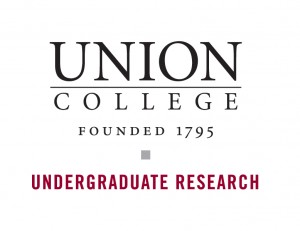Writing a winning proposal!
A good proposal for both Student Research Grants (SRGs) and Summer Research Fellowships is the first step toward a successful research project.
Here, we outline the key components of a good proposal, and provide other resources where you can get help to write a great proposal.
To get started, you can make an appointment at the Writing Center!
Key Components of a Research Proposal
1: Framework
The framework provides background information that the reader needs to orient themselves to your project. This is probably where you will include several references to past work in your general area as well as some specific sources that led to your taking on this project. Remember that the reviewers are not necessarily experts in your discipline, so they need this background information to help them understand the context and importance of your proposed work. Try to write this section as though you are explaining the work to a roommate or peer in a different major (i.e. not to your advisor, who is likely already an expert in the field).
2: Goals and Objectives
In this section you should clearly state the research question(s) you are trying to answer with your proposed work. There may be more than one specific question, which is fine, as long as the questions come together to form a coherent set of research objectives.
3: Significance
Here, you will explain how answering your research questions will advance the field or topic you are investigating. Because this is a research proposal for future work, it is expected that you do not already have the answer(s) to your research questions. You can discuss the anticipated outcomes (one way or another) and how they will affect understanding in the field. You can use this section to discuss how you will assess whether or not your research was successful at answering your questions. Good research projects will have some kind of an answer to the research questions regardless of the specific outcomes of the work (i.e. a null result is still useful to the field).
4: Project Plan
This is the section that contains the main “nuts and bolts” of your proposed work. You will explain the specific research techniques and approaches that you plan on using, as well as plans for analyzing and interpreting your data. This can include information such as: (1) What instrumentation do you plan to use, and what information can be gleaned from it? (2) Approximately how many experiments / surveys / archival collections / specimens etc. do you require or plan on, what are they and how will you get them? (3) If you need to go in the field, what is the field site, and how will you get there etc? (4) What are the basic steps involved in acquiring the information you need to answer your research question(s).
Not every proposal will require everything noted above, and some may include other specific information. Try to be as detailed in this section as you can be. Everyone understands that the plans may change as the research gets underway, but it is very helpful to at least start out will a well laid out plan, even if it does need to be reconsidered at a later time.
For SRG’s only: The project plan will also include a detailed budget that outlines the main items that will be purchased and their cost.
For Summer Research only: Consider including a statement of personal goals explaining what you hope to accomplish during the summer project toward your own academic or career development (optional).
General notes and advice:
- Your proposal should be written in full sentences and paragraphs with clear headings for each section.
- Proposals for both SRGs and Summer Research Fellowships should be roughly 2-4 pages single spaced, not including budget and references. Depending on the specific work they may be a little more or less, but this is a good general guideline.
- Your proposal should include relevant citations to journal articles, texts, news articles and other sources. Please use an accepted format for your references, including electronic resources.
- The formatting of your proposal is flexible (font size, spacing etc.), but please make sure is it legible and easy to read for the reviewers. Single or double spaced 12 point font such as Times New Roman is generally acceptable.
- Try to include figures, flow charts and/or tables to add excitement and to clarify complicated ideas or long lists of tasks etc.
- Make sure your budget is clearly organized. The best way to do this is usually to present it in a table format, with a final easy-to-see “Grand Total”.
- Make sure you share your proposal with your advisor in plenty of time to receive feedback and make revisions if necessary.
Here are some links that may be helpful as you prepare your proposal:
Make an appointment at the Writing Center!
More detailed advice and info. on proposal writing can be found in this book! https://whereresearchbegins.com/the-book/
